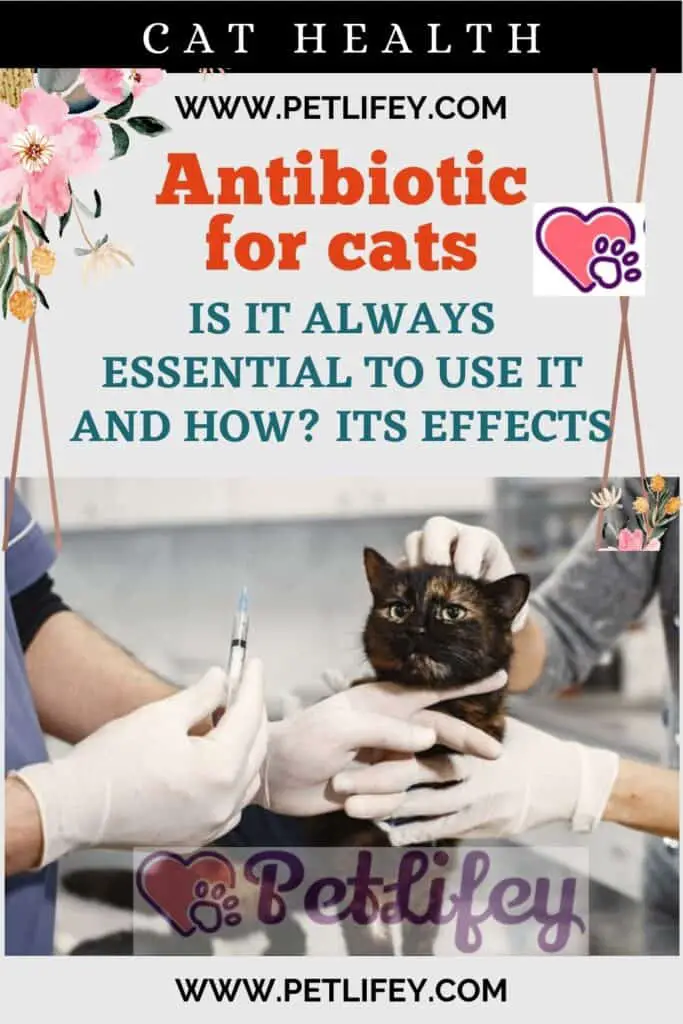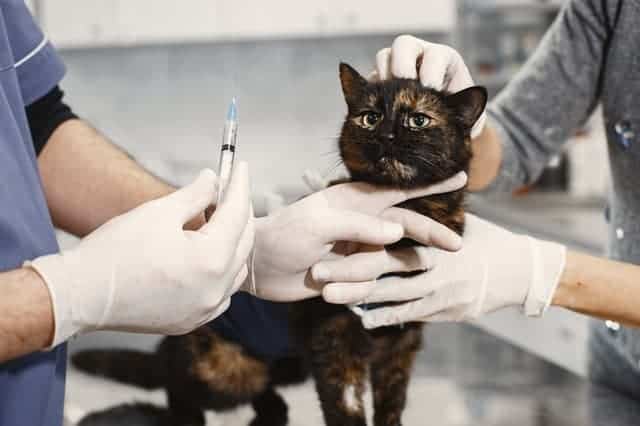
Is the cat antibiotic always essential to treat it? Let’s see when, how it should be used and its possible adverse effects.
When our cat gets sick, the vet will prescribe the antibiotic if necessary. But when should it be used? How to administer it to the cat and what are the adverse effects? Let’s see it together.
When to use the antibiotic for the cat
Many rules for giving antibiotics to dogs also apply to cats. Both are pets and are often exposed to the same health risks because they live similar realities.
Before going to see when to use an antibiotic for our cat it is good to know what it is.
An antibiotic is a substance, natural or chemical, which attacks the life cycle of microorganisms and is able to slow down their growth or cause their death. However, this only happens if a bacterium, not a virus or a fungus, is causing an infection.
It is therefore deduced that the antibiotic for cats should be used in the presence of bacterial infections or to prevent these from developing when there are other types of infections. It is very easy for a cat, which may spend its days outdoors and with other animals, to develop a bacterial infection.
Since drugs for cats have been studied precisely based on the cat’s metabolism, one antibiotic chosen at random instead of another is not good. It is of fundamental importance to know that, if we realize that our cat is sick even just because he is injured in the garden, we must never sin by replacing the veterinarian.
Who, based on diagnostic evaluations, can choose one antibiotic therapy for the cat instead of another is only the veterinarian. He will issue an electronic veterinary prescription and will issue us a PIN code through which the pharmacist will proceed to dispense the medicine (veterinary expenses can also be deducted in the tax return).
What are the most common infections in cats to use the antibiotic for?
- Infections of the upper respiratory tract : they manifest themselves with oculoconjunctival and nasal discharge, sneezing and blepharospasm (responsible are Bordetella B spp, Chlamydia, Mycoplasma ). In these cases, the active ingredient that the cat tolerates well is doxycycline, alternatively amoxicillin even if with poorer therapeutic effects.
- Pulmonary infections : they occur with bronchitis and / or pneumonia in which both Gram negative and Gram positive bacteria are responsible. The choice of antibiotic therapy is based on the result of bronchoalveolar lavage
- Infections of the salivary and mammary glands
- Skin infections
- Secondary infections : for example after surgery
Often the infectious cause is due to multiple microorganisms, such as Clostridium, Streptococcus, Staphylococcus , and the veterinarian prescribes a broad-spectrum antibiotic , which can act on various bacteria at the same time.
The Ministry of Health recently authorized the marketing of a new antibiotic based on Enrofloxacin: it is indicated for the treatment of bacterial infections affecting the respiratory, gastrointestinal and urinary systems, skin infections caused by Staphylococcuss spp., Escherichia coli , Haemophilus spp. and Pasteurella spp.
Both acute and chronic conjunctivitis, caused by Chlamydia felis , are very common .
Chlamydia felis
It is a Gram negative bacterium and mainly affects cats at a young age and, as it is transmitted through eye secretions, it is easy to find it in farms or in the case of cohabitation with other cats.
In severe cases, conjunctivitis is joined by keratitis and ulcerations, resulting in fever, weight loss and difficulty in breathing: other infections are probably associated with them.
A strong antibiotic therapy is needed and, if the cat lives with other similar ones, they must all be treated and then opt for the vaccine .
How to administer the antibiotic to the cat
First of all, as with dog antibiotics , the dose of antibiotic to be given to the cat is decided on the basis of its weight. If the antibiotic is to be given intravenously, intramuscularly or rectally then the vet will do it himself.
But what if the cat were to take oral antibiotics in the form of pills or drops?
We must not be frightened, especially if we see that our cat is inappetent because it is unwell. Just pulverize the tablet and dissolve it in a little water or camouflage it in his favorite food: be careful to disguise it well because the cat is sick but is smart and suspicious by nature!
If they were drops it would be a little easier because just dilute them in water or administer them with a dropper between cheek and teeth.
Undesirable effects on the use of the antibiotic to the cat
Like all drugs, antibiotics can also cause adverse reactions. Since it attacks both bad and good bacteria, it will also damage the intestinal flora which is responsible for the balance of the gastro intestinal system. This is why the simultaneous intake of appropriate lactic ferments is recommended.
The most common side effects are:
- hives or allergy
- nausea, vomiting and diarrhea
- decreased appetite
- lethargy
- kidney damage
- liver damage
- fever
- retinal toxicity blindness caused by some active ingredients with too high dosages
What to do if we notice that our cat, despite having started an antibiotic treatment, continues to feel bad or we notice something wrong?
You need to go to the vet immediately. He will evaluate if an undesirable effect is in progress and will be able to modify the therapy, suspend it, change it and, if the effect which has occurred is not described in the package leaflet , he will report it to the Pharmacovigilance .
Recommendations

The cat is an elegant and affectionate animal but certainly solitary and suspicious. You need to know how to earn his trust because if the cat is sick, you need to know how to interpret its signals.
Of great importance is having a trusted veterinarian, never replacing him.
Taking care of our cat’s health also means not humanizing it, not subjecting it to humiliating or risky practices (the use of a collar with a bell is). Anyone who owns a cat should know that it could transmit mycosis, toxoplasmosis, salmonella, bartonellosis, ascariasis.
Avoid coming into contact with it during pregnancy, if you are immunosuppressed or allergic to hair and / or saliva.
Maintaining a healthy and clean environment is, without a doubt, a primary action.






